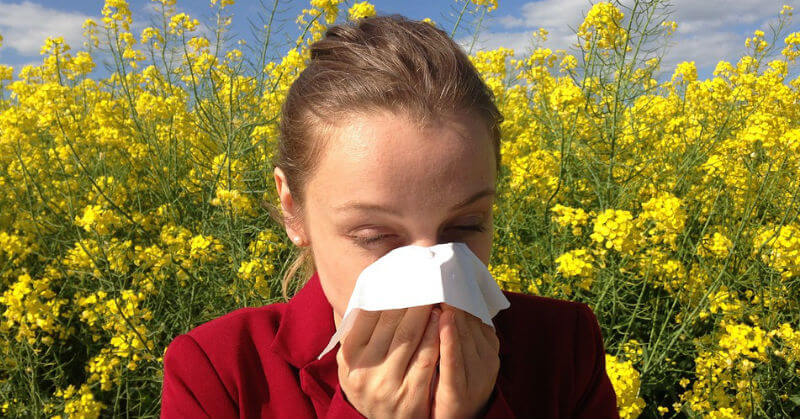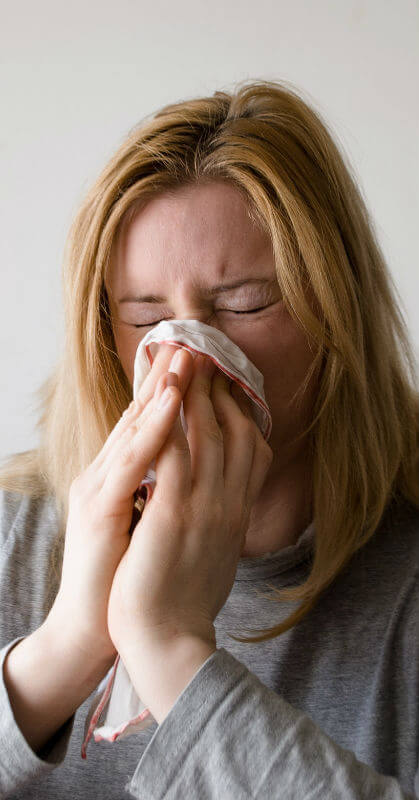Fall Nuisances and What to Do About Them
Oh Lardy! is a participant in the Amazon Services LLC Associates Program, an affiliate advertising program designed to provide a means for us to earn fees by linking to Amazon.com and affiliated sites.

There’s no doubt about it: fall is easily my favorite of the four seasons. There’s something so magical about the smell in the air, the colors of the falling leaves, the coziness of oversized sweaters and fleece-lined leggings. Of course, apple cider and pumpkin-spiced everything is nothing to sniff at either. But alas, fall isn’t perfect. There are a handful of nuisances that even the most autumn loving of us have to admit are irritating at best.
Allergies
It’s rather unfortunate, but fall can be just as bad for allergy sufferers as spring. Ragweed is particularly nasty, affecting one out of every four Americans. Since ragweed pollen is microscopic and has a tendency to cling to skin, it’s important to wash your hands after spending time outdoors. If you’ve been particularly outdoorsy, taking a shower and washing your hair wouldn’t be the worst idea. In fact, if you’re going to be doing any heavy-duty work out there — mowing the lawn, trimming trees, and so on — wear filter mask and sturdy gloves. To keep ragweed out of your house, keep doors and windows closed and take your shoes off when you come inside.
Mold is another fall allergen that can be particularly hard to deal with. Mold likes to grow where there’s moisture to feed it — basements, bathrooms, and even piles of dead leaves can house this nasty fungus. Because of the nature of the beast, the best way to battle mold is moisture control. Start by removing any visible mold from surfaces with detergent and water. Then, prevent it from returning by cleaning up any standing water immediately, using ventilation fans in the bathroom and laundry rooms, and keeping the humidity in your home below 60 percent.
Finally, there’s dust. Dust is one of those lovely allergens that we get to deal with year-round. Dust has to be fought on two fronts, the first of which is your ventilation system. Have your air ducts cleaned once a year to avoid the buildup of dust. Install (and periodically change) quality HEPA furnace filters in order to keep allergenic particles out of the air. Next comes your house itself. Regularly sweep and vacuum your floors as well as wiping dust from household surfaces. Dust mites are especially fond of beds (there are lots of dead skin flakes to feed on) so wash your bedding weekly and consider allergy-blocking sheets, pillowcases, and mattress covers.
Seasonal Affective Disorder
Seasonal affective disorder (SAD) is a form of depression that's linked to the change in seasons. Most people with SAD start seeing symptoms in the late fall, but they continue through the winter months. These symptoms can be very serious and may include:
- Irritability
- Hypersensitivity
- Low energy and fatigue
- Oversleeping
- Heavy, “leaden” feeling in the arms or legs
- Problems socializing with others
- Changes in appetite
- Weight gain
- Suicidal thoughts
Though doctors aren’t entirely sure what causes seasonal affective disorder, there are some factors they suspect, such as a drop in serotonin or melatonin levels, as well as disruptions to the body’s internal clock due to decreased sunlight. Some people are more at risk for developing SAD, including women, young adults, those who have a family history of depression, and those who live far from the equator.
Fortunately, there are a number of treatments for SAD. Medication (selective serotonin reuptake inhibitors) and psychotherapy have been found to be particularly helpful. Another popular option is light therapy, wherein patients use “sunboxes” or “happy lights” which contain full–spectrum light bulbs that mimic natural daylight.
We all have those days — you know, the ones where you’re just not feeling yourself — and that’s perfectly normal. However, if you find these days are going on at length and you’re not finding pleasure in activities you normally enjoy, it’s time to see your doctor.
Heating
Heating can be a bit tricky in those early days of autumn — otherwise known as the time of year where you put on a sweater in the morning and regret it by the afternoon. For the first few weeks you can simply bundle up in the morning instead of turning on the furnace. However, as the days start to grow colder, there are a few tricks for avoiding sky-high heating expenses.
If your house is empty during the day, turn down the heat. Set your thermostat to dial down just as you leave in the morning, and climb back up when you get home. Turn it down at night too. When you’re wearing snuggly pajamas and wrapped in thick blankets, you don’t need the heat to be set at 70 degrees. What’s more, you’ll likely sleep better in the cold. When you’re home during the weekend, lower your thermostat a couple degrees and throw on a sweater, socks, and long underwear. You’ll be extra cozy while saving on your heating bill.
Finally, with winter on its way, you’ll want to make sure your furnace has had a tune up. By performing some basic cleaning and maintenance now, you can save a bucketload of money that might have had to go toward taking care of a crisis. You absolutely do not want to find yourself without heat during the coldest part of the year.
Even though autumn is one of the most beautiful, Instagram-worthy seasons, it too has it’s own fair share of issues. Allergies, seasonal affective disorder, and the fall heating dance — know where you stand and what to do when they pop up, and you’ll have a far easier go of it. Happy fall, friends!
Liz Greene is a dog loving, beard envying, pop culture geek from the beautiful city of trees, Boise, Idaho. You can catch up with her latest misadventures on Instant Lo or follow her on Twitter@LizVGreene.

